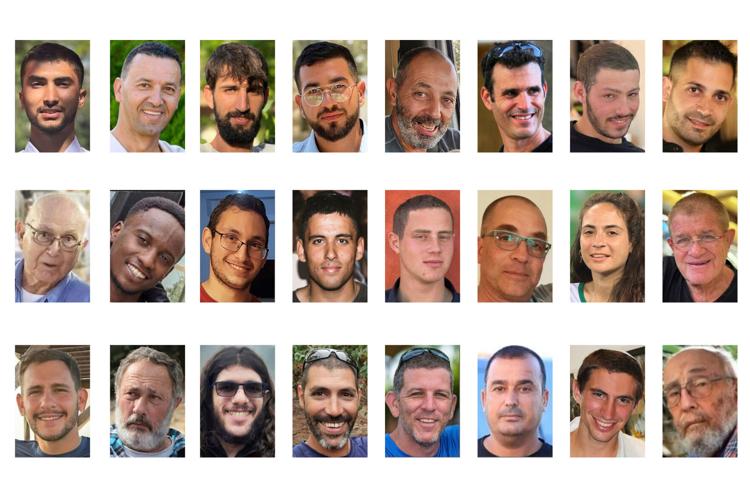World
Slow Progress in Returning Remains of Six Hostages in Gaza

Since the U.S.-brokered ceasefire in Gaza commenced on October 10, 2023, Palestinian militants have returned the remains of 22 hostages who were held for two years. However, the process for returning the remains of the six remaining hostages is moving slowly, creating frustration on both sides. Hamas has claimed that the remains are buried under rubble left by Israel’s extensive military operations in Gaza. In response, Israel has accused the militants of delaying the process and has threatened to resume military actions or restrict humanitarian aid if all remains are not returned promptly.
In the latest development, Hamas returned the remains of Joshua Loitu Mollel, a Tanzanian agricultural student. He was killed during the militants’ attack on southern Israel on October 7, 2023. The Israeli military confirmed his identity as a 21-year-old who had recently arrived in Israel for an agricultural internship, just 19 days before the assault began. In exchange, Israel has returned the bodies of 285 Palestinians to Gaza, although details regarding their identities remain scarce. It is unclear whether they were individuals killed during the October 7 attack, Palestinian detainees who died in Israeli custody, or bodies taken from Gaza by Israeli forces during the conflict.
Health officials in Gaza have faced challenges in identifying the returned bodies due to limited access to necessary DNA kits. So far, they have identified 84 of the remains.
Details on the Six Hostages Whose Remains Are Still Missing
The hostages whose remains have not yet been returned include individuals with diverse backgrounds and stories. Among them is Meny Godard, a former professional soccer player who served in the Israeli military during the 1973 Middle East War. On the morning of October 7, Godard and his wife, Ayelet, were forced to flee their home, which was set ablaze. Ayelet was killed by militants after she informed her children of Meny’s death. The couple is survived by four children and six grandchildren, and their family held a joint funeral.
Another notable case is that of Hadar Goldin, an Israeli soldier whose remains have been held in Gaza since before the current conflict. He was killed on August 1, 2014, shortly after a ceasefire was declared during that year’s war between Israel and Hamas. Evidence, including a blood-stained shirt and prayer fringes, confirmed his death shortly after it occurred. Goldin’s family observed a somber milestone earlier this year, marking 4,000 days since his body was taken.
Also among the missing is Ran Gvili, a soldier who had been recovering from a motorcycle accident prior to October 7. Despite his injury, he rushed to assist fellow officers and was killed during the ensuing chaos. His family did not receive confirmation of his death until four months later.
The plight of Dror Or also highlights the human cost of the conflict. A father of three and a dairy farm manager at Kibbutz Be’eri, Or and his wife were killed when militants set their house on fire. Their children, Noam, 17, and Alma, 13, were abducted during the violence but were released in a subsequent ceasefire.
Another hostage, Sudthisak Rinthalak, was an agricultural worker from Thailand. He had been employed at Kibbutz Be’eri since 2017 and was one of 31 Thai workers kidnapped on October 7, making up the largest group of foreign nationals held captive. Reports indicate that 46 Thais have lost their lives during the ongoing conflict.
Lastly, Lior Rudaeff, originally from Argentina, dedicated over 40 years to volunteering as an ambulance driver. He was killed while engaging militants during the October 7 attack, and his remains were subsequently brought to Gaza. Rudaeff is survived by four children and three grandchildren.
As negotiations continue, the families of these individuals remain in a state of uncertainty, awaiting news of their loved ones’ remains. The situation underscores the complex and often painful realities of the ongoing conflict in the region. For further updates on the situation, follow AP’s comprehensive coverage of the Israel-Hamas war.
-

 Lifestyle4 months ago
Lifestyle4 months agoLibraries Challenge Rising E-Book Costs Amid Growing Demand
-

 Sports3 months ago
Sports3 months agoTyreek Hill Responds to Tua Tagovailoa’s Comments on Team Dynamics
-

 Sports3 months ago
Sports3 months agoLiverpool Secures Agreement to Sign Young Striker Will Wright
-

 Lifestyle3 months ago
Lifestyle3 months agoSave Your Split Tomatoes: Expert Tips for Gardeners
-

 Lifestyle3 months ago
Lifestyle3 months agoPrincess Beatrice’s Daughter Athena Joins Siblings at London Parade
-

 World3 months ago
World3 months agoWinter Storms Lash New South Wales with Snow, Flood Risks
-

 Science4 months ago
Science4 months agoTrump Administration Moves to Repeal Key Climate Regulation
-

 Science3 months ago
Science3 months agoSan Francisco Hosts Unique Contest to Identify “Performative Males”
-

 Business4 months ago
Business4 months agoSoFi Technologies Shares Slip 2% Following Insider Stock Sale
-

 Science4 months ago
Science4 months agoNew Tool Reveals Link Between Horse Coat Condition and Parasites
-

 Sports3 months ago
Sports3 months agoElon Musk Sculpture Travels From Utah to Yosemite National Park
-

 Science4 months ago
Science4 months agoNew Study Confirms Humans Transported Stonehenge Bluestones









